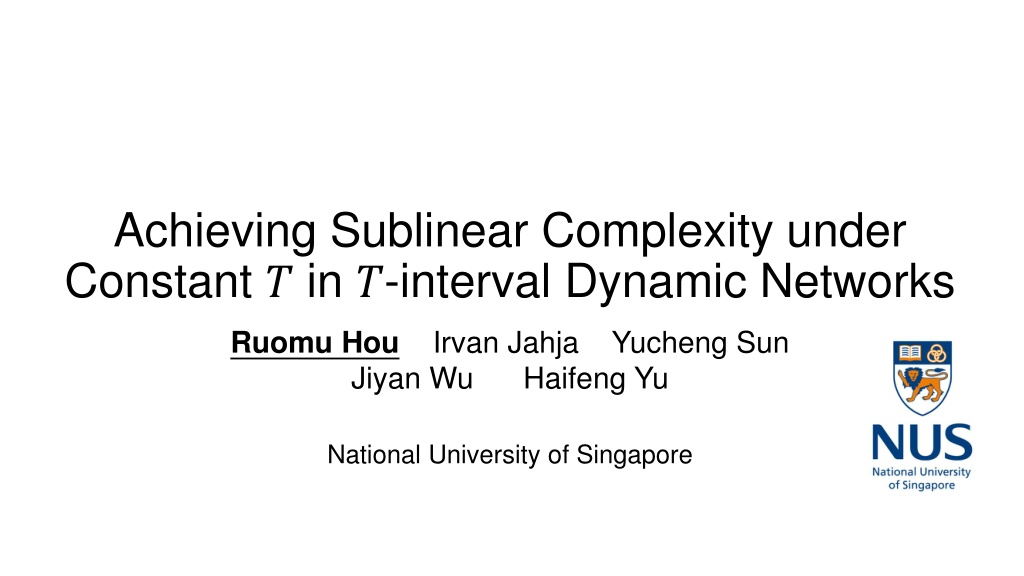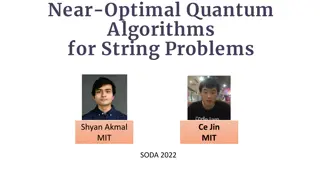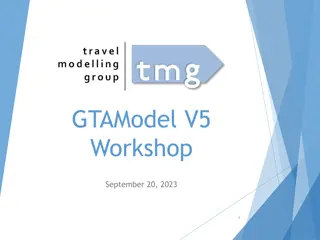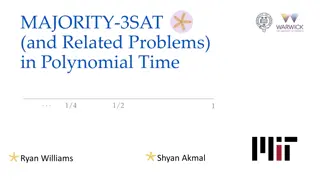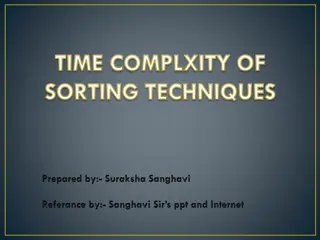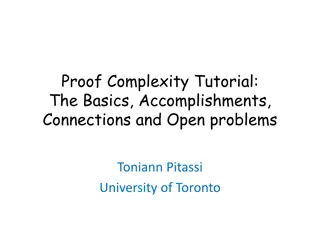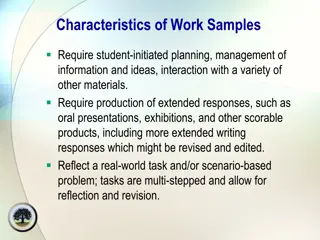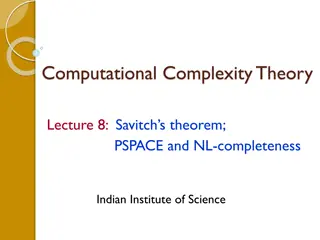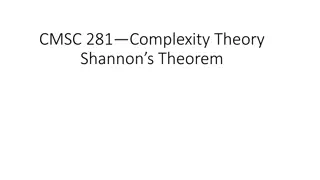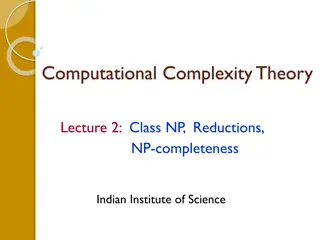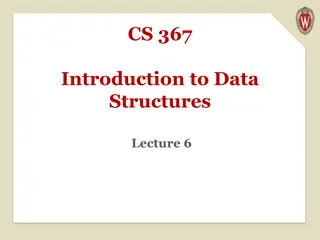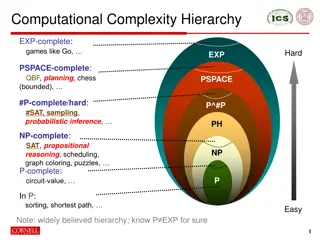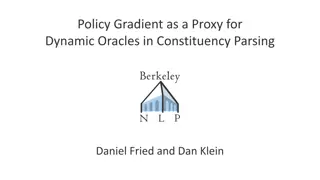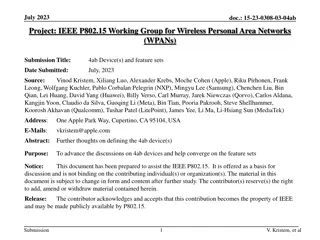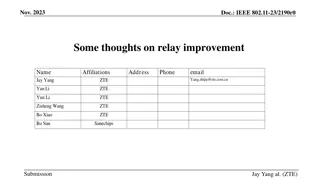Achieving Sublinear Complexity in Dynamic Networks
This research explores achieving sublinear complexity under constant ? in dynamic networks with ?-interval updates. It covers aspects like network settings, communication models, fundamental problems considered, existing results, and challenges in reducing complexity. The focus is on count time complexity and minimizing the rounds required for efficient network operations.
Download Presentation

Please find below an Image/Link to download the presentation.
The content on the website is provided AS IS for your information and personal use only. It may not be sold, licensed, or shared on other websites without obtaining consent from the author. Download presentation by click this link. If you encounter any issues during the download, it is possible that the publisher has removed the file from their server.
E N D
Presentation Transcript
Achieving Sublinear Complexity under Constant ? in ?-interval Dynamic Networks Ruomu Hou Irvan Jahja Yucheng Sun Jiyan Wu Haifeng Yu National University of Singapore Achieving Sublinear Complexity under Constant ? in ?-interval Dynamic Networks 1 / 14
Our Settings Nodes and Topology ?-interval dynamic network ? nodes (? is not given) A unique ID for each node Synchronous, all nodes start at round 1 Adversary determines the topology in every round Oblivious adversary Every ? consecutive rounds have a connected subgraph Nodes do not know their neighbors ?: Dynamic diameter The number of rounds needed for a flooding to reach all nodes Unknown to the algorithm ? [1,? 1] Achieving Sublinear Complexity under Constant ? in ?-interval Dynamic Networks 2 / 14
Our Settings Communication Local broadcast CONGEST model [1,2,3] Every round, each node sends a single message to all neighbors Message size is ?(log?) All messages received by the end of each round [1] Ahmadi and Kuhn. 2017. In ALGOSENSORS. [2] Haeupler and Karger. 2011. In PODC. [3] Peleg. 1987. Society for Industrial and Applied Mathematics. Achieving Sublinear Complexity under Constant ? in ?-interval Dynamic Networks 3 / 14
Problems We Consider We consider the following fundamental problems: Count LeaderElection Consensus Max/Sum ConfirmedFlood In the following, we will focus on Count Time Complexity as the measure of goodness: expected number of rounds needed for all nodes to output and terminate, under worst-case input and worst-case oblivious adversary Achieving Sublinear Complexity under Constant ? in ?-interval Dynamic Networks 4 / 14
Existing Results Trivial lower bound: (?) rounds ? can be much smaller than ? Most existing works [1,2,3]: linear (?) regardless of ?, even if ? = Reduce to token dissemination: collect ?(log?) sized input from every node Token dissemination fundamentally needs linear (?) rounds The only sublinear algorithm [4] ?(?3log2?) rounds, much better than linear for small ? But requires ? = (?2log2?) [1] Das Sarma, Molla, and Pandurangan. 2012. In DISC. [2] Haeupler and Karger. 2011. In PODC. [3] Kuhn, Lynch, and Oshman. 2010. In STOC. [4] Jahja and Yu. 2020. In SPAA. Achieving Sublinear Complexity under Constant ? in ?-interval Dynamic Networks 5 / 14
Our Results The only sublinear algorithm [1] requires ? = (?2log2?) Sublinear complexity for smaller ?? Our main result: sublinear algorithm for constant ? ?(??6/7) rounds for all previous problems, under ? 4 ? ? < ????????? sublinear algorithm? ? ????????? sublinear algorithm ? ? < ????????? sublinear algorithm ? ????????? sublinear algorithm ? ? ? sublinear algorithm? [1] Jahja and Yu. 2020. In SPAA. Achieving Sublinear Complexity under Constant ? in ?-interval Dynamic Networks 6 / 14
Our General Approach Approach in [1] for ? = (?2log2?) fundamentally does not work for small T Our general approach for count (for which we do not claim novelty): Challenges Challenges in random walk Existing ones are slow Hard to implement with unknown neighbors 1 1 1 5 5 5 5 5 5 5 5 1 1 3 3 3 3 3 3 3 3 sink sink 1 2 Some values are not collected Too many/few sinks Random walk too short Sink flooding for too many/too few rounds [1] Jahja and Yu. 2020. In SPAA. 1 1 1 1 Achieving Sublinear Complexity under Constant ? in ?-interval Dynamic Networks 7 / 14
Our Novel Techniques to Overcome the Challenges Challenges Challenges in random walk Existing ones are slow Hard to implement with unknown neighbors 1. ?-bounded probability random walk Reach sinks faster (sublinear rounds) Generalization of max-degree random walk [1,2] Do not require knowledge of neighbors (requires ? 4) 2. Soundness checking mechanism Some values are not collected Too many/few sinks Random walk too short Sink flooding for too many/too few rounds [1] Denysyuk and Rodrigues. 2014. In DISC. [2] Ahmadi, Kuhn, Kutten, Molla, and Pandurangan. 2019.. In ICDCS. 3. Dual-schedule termination Achieving Sublinear Complexity under Constant ? in ?-interval Dynamic Networks 8 / 14
Soundness Checking Challenges Some values are not collected Too many/few sinks Random walk too short Sink flooding for too many/too few rounds Decide whether all values are collected Using random shares that adds up to 0 (??? ?) Shares collected together with all values If collected shares add up to 0, pass the checking output the count 1 1 3 3 1 6 How to get the shares? Nodes do not pass soundness 1 1 1 9 checking at the same time! e.g. ? = 11 4 1 1 missing value 5 The other shares do not add up to 0 Soundness checking will not pass 1 3 1 2 Achieving Sublinear Complexity under Constant ? in ?-interval Dynamic Networks 9 / 14
Soundness Checking how to generate shares Easy in centralized setting ? 1 random numbers and 1 node takes the complement This is what n-n secret sharing is doing In distributed setting Every node distribute random sub-shares Keep a complement sub-share Random share = sum of all sub-shares 4 7 2 2 7 C A 1 11 B Achieving Sublinear Complexity under Constant ? in ?-interval Dynamic Networks 10 / 14
Soundness Checking caveats nodes whose values are collected Random shares are correlated in complicated ways Local broadcast model -> same subshare to all neighbors Shares are correlated We ensure ? to be larger than the degree of every node Agreement on ? B C A Choosing the ? without knowing ? ? too small -> error probability too high ? too big -> exceed the ?(log?) message size Error probability is a function of ? and ? ? unknown See our paper for details ?? ?? ?? We want: deg(?)??+ ? ??,?? 0(??? ?) Achieving Sublinear Complexity under Constant ? in ?-interval Dynamic Networks 11 / 14
Dual-Schedule Termination Nodes may not pass soundness checking at the same time If node ? terminate immediately, node ? will not be able to count correctly any more Simplified case: ? is known Flood ? and terminate in ? = 4 rounds round: 10 round: 11 round: 13 round: 14 terminate output ? = 8 in round 14 ? ? = 8 termination =14 terminate output ? = 8 in round 10+?=14 Achieving Sublinear Complexity under Constant ? in ?-interval Dynamic Networks 12 / 14
Dual-Schedule Termination However ? is not known We start with a small value ?0 Soundness checking passed, output ? All nodes terminate in ?0 rounds ? ?0 2nd Count instance to ensure all nodes have output ? Schdule termination in ?0 rounds where ?0 is small Schdule termination in ? 1 rounds Some node terminates before all output ? schedule to terminate Some node may not terminate in ? rounds Slow termination Fast termination ? > ?0 All nodes Achieving Sublinear Complexity under Constant ? in ?-interval Dynamic Networks 13 / 14
Conclusion We consider synchronous ?-interval dynamic networks with local broadcast CONGEST model for communication We investigate the time complexity needed to solve a number of fundamental problems: Count, LeaderElection, Consensus, Max/Sum, ConfirmedFlood Future work: 1 ? 3 ? ? < ????????? sublinear algorithm? ? ????????? sublinear algorithm ? ? < ????????? sublinear algorithm ? ????????? sublinear algorithm ? ? ? sublinear algorithm? Achieving Sublinear Complexity under Constant ? in ?-interval Dynamic Networks 14 / 14
